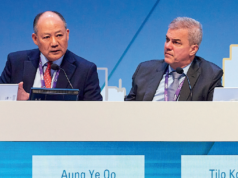Isaac Nyamekye (Worcester, UK) reported that compared with the Venefit and radiofrequency induced thermotherapy (RFITT) systems, endovascular radiofrequency ablation (EVRF) provided inferior truncal ablation at six months. He added this result indicated that operators should be more cautious about adopting “new, unproven, endovascular techniques into clinical practice”.
Speaking at the 2019 Charing Cross Symposium (CX, 15–18 April, London, UK), Nyamekye presented the results of the 3RF study, which compared three radiofrequency ablation systems (Venefit, RFITT, and EVRF). The rationale for the study, he said, was that “not all devices are same”. The Venefit device, for example, has a heat coil (70mm) applicator tip whereas the RFITT system has a bipolar tip (15mm) and the EVRF system a monopolar (5mm) tip. Additionally, the RFITT and EVRF systems are activated by foot, but the Venefit system is activated by hand.
In the study, 182 patients with great saphenous varicose veins were randomised to receive treatment with Venefit system (58), the RFITT system (64), or the EVRF system (60). The primary endpoint was successful ablation at six and 12 months. Secondary endpoints included complications, treatment time, seven-day pain scores and table counts, and health-related quality of life. There were no significant differences between treatment groups in terms of age, great saphenous vein diameter or length, and gender.
According to Nyamekye, the RFITT system had the shortest ablation time, with the EVRF system having the longest ablation time (p<0.0001). Although this did not translate into a significant difference in the rate of successful early truncal ablation (two weeks) between the groups, the rate of successful truncal ablation (full ablation) at six months was significantly lower with the EVRF system at six months: 79.3% vs. 98.3% for RFITT vs. 100% for Venefit (p<0.00001).
However, there were no significant differences in quality of life scores between groups—all patients saw an improvement in their baseline EQ5D pain/discomfort scores and saw reductions in their baseline Aberdeen Varicose Vein Questionnaire scores. Furthermore, there were no reports of deep vein thrombosis, pulmonary embolism events, or thermal injury events.
The majority of patients, Nyamekye noted, scored zero for both pain and tablet count scores after their procedures. Of those who did have a pain/tablet score, they scored low—the median total pain scores were 3, 2.5, and 5 for Venefit, RFITT, and EVRF respectively.
Nyamekye concluded his presentation by saying EVRF provided “inferior” ablation compared with the other systems. However, he added that the real message of the study was that the vascular community should “be more critical before accepting new unproven endovenous technologies into clinical practice if we do not want to repeat some of the controversies seen in other areas of vascular medicine”.











